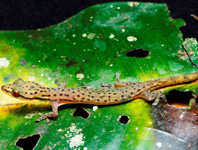Abstract
The Australian Acacia-thrips lineage comprises at least 250 species in 30 genera of Phlaeothripinae, all of them known only from Acacia species in Australia. Two new species from two of these genera are described here as the first recorded instances of host-shifting within this diverse thrips lineage, with the host shifts being between unrelated angiosperm orders, from Fabales to Proteales and Myrtales. Brakothrips eucalypti sp. n. is described from the branches of a species of Eucalyptus, and Katothrips banksiae sp. n. is described forming substantial colonies within lepidopterous leaf mines on a species of Banksia. Previously these thrips genera were known only from Acacia species, and comprised seven described species of Brakothrips and 35 described species of Katothrips.
References
Crespi, B.J. (1992) Eusociality in Australian gall thrips. Nature, 359, 724–726.
https://doi.org/10.1038/359724a0
Crespi, B.J., Morris, D.C. & Mound, L.A. (2004) Evolution of ecological and behavioural diversity: Australian Acacia thrips as model organisms. Australian Biological Resources Study, Canberra & Australian National Insect Collection, Canberra, 328 pp.
https://doi.org/10.1038/359724a0
Crespi, B. & Yanaga, D. (1995) The definition of eusociality. Behavioral Ecology, 6, 109–115.
https://doi.org/10.1093/beheco/6.1.109
Gilbert, J.D.J. & Simpson, S.J. (2013) Natural history and behaviour of Dunatothrips aneurae Mound (Thysanoptera: Phlaeothripidae), a phyllode-gluing thrips with facultative pleometrosis. Biological Journal of the Linnean Society London, 109, 802–816.
https://doi.org/10.1111/bij.12100
Gilbert, J.D.J., Wells, A. & Simpson, S.J. (2018) Skew in ovarian activation depends on domicile size in phyllode-glueing thrips. Nature, Scientific Reports, 8, 3597.
https://doi.org/10.1038/s41598-018-21635-z
Mound, L.A. (1971) Gall-forming thrips and allied species (Thysanoptera: Phlaeothripinae) from Acacia trees in Australia. Bulletin of the British Museum (Natural History). Entomology, 25, 387–466.
https://doi.org/10.5962/bhl.part.19680
Nyffeler, R. (1999) A new ordinal classification of the flowering plants. Trends in Ecology and Evolution, 14 (5), 168–170.
https://doi.org/10.1016/S0169-5347(99)01630-4


